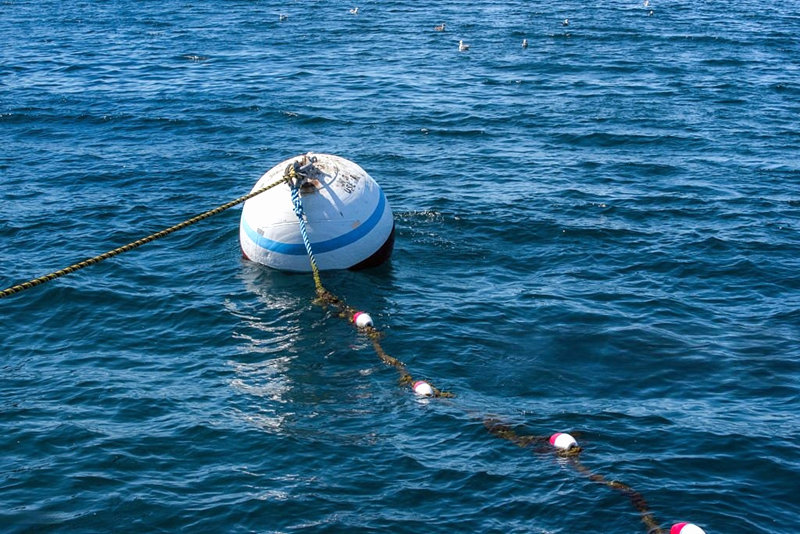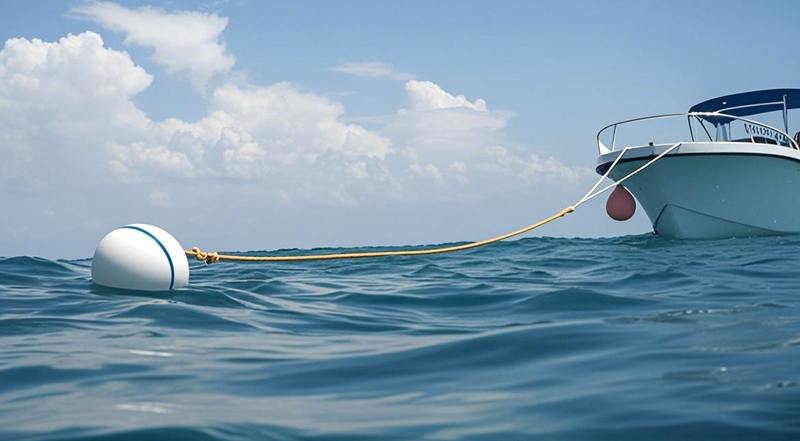Mooring buoys are essential maritime markers that provide safe and designated spots for vessels to secure themselves without dropping an anchor. Unlike navigational buoys that guide boats through waterways, mooring buoys have a distinct color pattern that helps sailors and boaters recognize their function. If you've ever wondered what colors appear on a mooring buoy, this guide will provide a clear and detailed explanation.
The Standard Color Scheme of a Mooring Buoy
According to international maritime regulations, mooring buoys are standardized with the following color scheme:
White Body: The entire buoy is predominantly white to ensure high visibility.
Blue Horizontal Band: A single, clearly visible blue stripe encircles the buoy, typically at or near the center.

This color pattern is used worldwide, including in regulations set by the International Association of Marine Aids to Navigation and Lighthouse Authorities (IALA) and the United States Coast Guard (USCG). The combination of white and blue distinguishes mooring buoys from navigational and regulatory buoys, helping mariners quickly identify them.
Why Are Mooring Buoys White with a Blue Band?
The choice of white with a blue stripe is not random. Here’s why this color scheme is used:
High Visibility: White provides a strong contrast against the water, making the buoy easy to spot.
Differentiation: The blue band helps distinguish mooring buoys from other types of buoys, such as:
1)Red and Green Buoys: Used for channel marking (port and starboard markers).
2)Yellow Buoys: Indicate special zones like fishing areas or scientific research sites.
3)Black and White Buoys: Used for inland waters and regulatory markings.
4)Universal Standardization: This color scheme ensures uniformity, allowing boaters to recognize mooring buoys in any country or region.

Additional Features and Variations
While the standard mooring buoy is white with a blue band, some variations exist, including:
Reflective Tape: Some buoys include reflective strips to enhance visibility at night.
Identification Numbers: Some buoys have a unique ID number or name for mooring assignment purposes.
Lights: Though rare, some mooring buoys have small lights for nighttime navigation.
Mooring Buoys vs. Other Types of Buoys
To avoid confusion, here’s a quick comparison of mooring buoys with other common buoy types:
Buoy Type | Color Pattern | Purpose |
Mooring Buoy | White body, blue band | Secure vessel mooring |
Red (starboard) / Green (port) | Mark navigational routes | |
Regulatory Buoys | White with orange bands | Indicate hazards or zones |
Special Purpose Buoys | Yellow | Mark specific zones like research areas |
Mooring buoys are easily identifiable due to their white body and blue horizontal band, a standardized color scheme recognized worldwide. This distinct marking helps sailors and boaters locate safe mooring spots without confusion. Understanding these colors ensures better navigation, safety, and compliance with maritime regulations.
Whether you're a boating enthusiast, a professional sailor, or just curious about maritime markers, knowing the colors of a mooring buoy is essential for safe and efficient water travel.
We ZAZ Buoys as an expert in buoy technology, are dedicated to providing professional consultation and tailored solutions for all your buoy-related needs. Whether you require technical guidance or product recommendations, our team is here to assist you. We also offer comprehensive customization services, ensuring that every buoy is precisely designed to meet your specific requirements. Feel free to reach out to us—we’re here to help you find the perfect buoy solution!